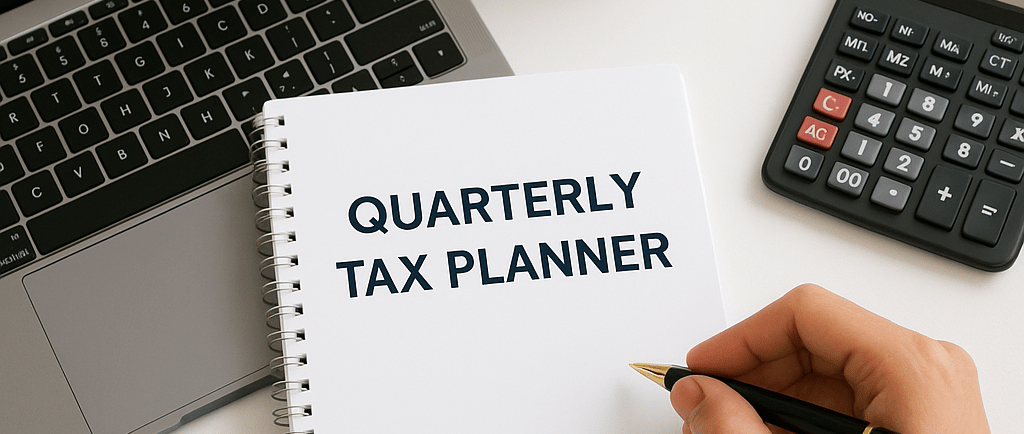How to Estimate and Pay Your Quarterly Taxes — A Step-by-Step Guide for Self-Employed Individuals
If you’re self-employed, a freelancer, or a small business owner, quarterly estimated tax payments are a critical part of staying on the IRS’s good side. Unlike W-2 employees who have taxes withheld from their paychecks, you’re responsible for paying taxes as you earn. That’s where estimated tax payments come in. Let’s break this down step-by-step so it’s easy to follow—no accounting degree required.
Christopher Johns, EA
5/10/20252 min read


Step 1: Understand Who Needs to Pay Estimated Taxes
You must make estimated tax payments if:
You expect to owe at least $1,000 in taxes for the year after subtracting your withholding and credits.
You receive income without tax withholding, such as:
1099 income
Self-employment income
Rental or investment income
Side hustle income
Step 2: Calculate Your Expected Income
Start by estimating your total income for the year. This includes:
Business revenue
Freelance income
Interest, dividends, or rental income
Any other taxable income
If you’re just starting out, use your best guess. If you’ve been in business for at least a year, look at your prior-year income and adjust based on expected growth.
Step 3: Estimate Your Taxable Income
Once you know your gross income, subtract your business expenses to find your net income. From there:
Deduct things like the standard deduction (or itemized if applicable).
Apply any available credits.
Now, you’ve got your estimated taxable income.
Step 4: Calculate Your Estimated Tax
Use the following federal tax rates for self-employment income:
Income tax (based on your tax bracket)
Self-employment tax of 15.3% (12.4% for Social Security + 2.9% for Medicare)
Pro Tip: Use the IRS Form 1040-ES worksheet or a reliable tax calculator online.
Here’s a simplified method:
Multiply your net income by 92.35% (to find self-employment income).
Multiply that amount by 15.3% for self-employment tax.
Add your income tax based on your tax bracket.
Divide the total by 4 to find each quarter’s payment.
Step 5: Know the Due Dates
Estimated taxes are due four times per year, not just every 3 months:
April 15 – for income earned Jan 1–Mar 31
June 15 – for income earned Apr 1–May 31
September 15 – for income earned Jun 1–Aug 31
January 15 (next year) – for income earned Sep 1–Dec 31
If the 15th falls on a weekend or holiday, the deadline moves to the next business day.
Step 6: Make the Payments
You have several ways to pay:
IRS Direct Pay: directpay.irs.gov
IRS EFTPS: eftps.gov
Via your tax software or accountant
Mailing a check with Form 1040-ES voucher
Whichever method you choose, keep records of your payments!
Step 7: Repeat and Adjust as Needed
Your income might fluctuate, so don’t just “set it and forget it.” Reevaluate each quarter and adjust your payments if needed to avoid underpayment penalties or overpaying.
Why Working with a Professional Makes This Easier
Doing your own estimated tax calculations is totally doable—but it can be time-consuming and confusing, especially when your income changes, or you qualify for deductions you didn’t know about. That’s where working with a professional can make life easier.
We help self-employed professionals, freelancers, and business owners stay compliant, minimize taxes, and avoid nasty surprises at tax time. With a clear plan, you'll have confidence in your cash flow and peace of mind all year long.
Need help making sense of your estimated taxes? Let’s take it off your plate. Book a free consultation with our team and we’ll walk you through it—no stress, no overwhelm.
Spark Tax Advisors
Expert advice for small businesses and entrepreneurs.
info@sparktaxadvisors.com
(904) 853-1068
© 2025. All rights reserved.
